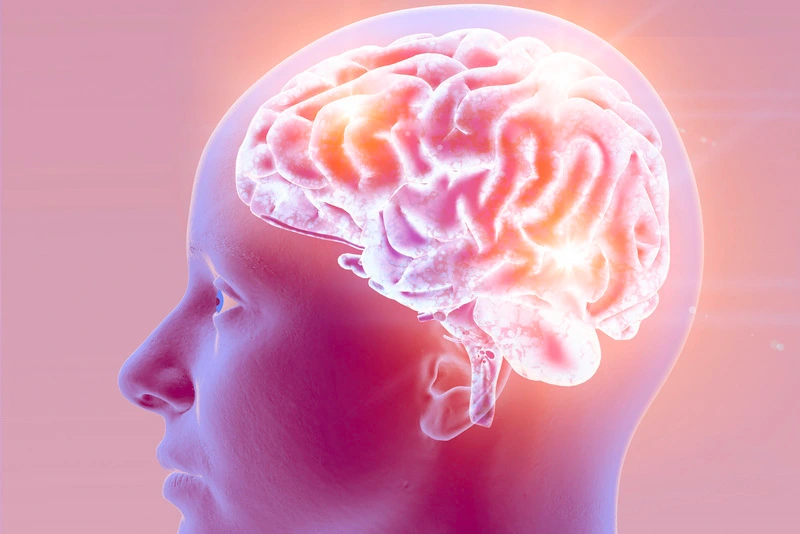This article will explore the use of Transcranial Magnetic Stimulation (TMS) as a potential treatment for anhedonia.
Introduction
Anhedonia refers to a noticeable disinterest or pleasure from daily activities, something that often accompanies depression. Anhedonia is a common symptom of many mental health disorders, not strictly depression, and that diminished ability to experience pleasure or interest in previously enjoyable activities is often resistant to improvement even if other symptoms of a mental health condition improve with treatment like medication. Thankfully, transcranial magnetic stimulation therapy is now poised as a potential treatment for anhedonia.
Understanding Anhedonia and its Implications
Millions of people around the world struggle with depression, and only 30% of them get significant remission from prescription antidepressants. Neuromodulatory treatments like electroconvulsive therapy became an alternative but have since been outshone by transcranial magnetic stimulation.
Anhedonia is a key symptom of depression where individuals have a markedly diminished interest in all of their daily activities. Individuals who struggle with anhedonia often have inferior outcomes when antidepressant medications are used for treatment, which means those same individuals need Alternative forms of care to enjoy improvement.

What is TMS?
Transcranial Magnetic Stimulation (TMS) is a technology that relies on magnetic waves, much the same as an MRI. These waves are sent through pulses across deep areas of the brain. This stimulation can help underperforming neurons fire correctly.
How it works
TMS relies on a helmet placed over your head. You remain awake during your treatment sessions, which last no more than twenty minutes.
While your session takes place, you will sit in a comfortable chair where you can chat with people, read a book, watch TV, or relax. Hundreds of non-invasive magnetic pulses are delivered to different parts of your brain in two-second bursts across twenty-second intervals.
Once the session ends, you can return to your regular routine.
Efficacy of TMS Anhedonia
Several studies have continued to confirm the effectiveness of TMS treatment for a wide array of conditions. It really works, with several patients experiencing remission of symptoms for some conditions and others finding a solution where other treatments failed.
Many people start to notice an improvement after the second or third week of TMS treatment. Some take up to four weeks to see a significant change. However, the sessions are quite short, no more than twenty minutes, and several can be scheduled in a given week to expedite improvement.
Research and Clinical Applications of TMS for Anhedonia
Anhedonia is a defining feature of depression, one that is very difficult to treat. However, research has shown that Anhedonia and TMS treatment can offer relief.
Mechanisms of Action of TMS on Anhedonia
Transcranial magnetic stimulation uses magnetic pulses applied all over the scalp to induce activity in certain areas of the brain associated with anhedonia, like the dorsolateral prefrontal cortex.
In many who struggle with anhedonia, this area of the brain has neuron lapses or inactivity where neurons are not functioning the way they should. Stimulation with magnetic pulses ensures that they get better blood flow and reactivation when they are not working the way they need to. This can help treat the main symptoms of anhedonia.
Clinical evidence has found that where rewards circuit connectivity does not function as it should, TMS for anhedonia that targets the dorsal medial prefrontal cortex can show statistically significant improvements for anhedonia symptoms, making it one of the only available treatments. Several studies have measured the change in anhedonia after transcranial magnetic stimulation to the dorsolateral prefrontal cortex, with results indicating significant improvement after treatment.
Similarly, research suggests that where there is abnormal lateralized connectivity in the ventromedial prefrontal cortex, TMS can improve circuit integrity in this area and improve hedonic function, reducing the overall symptoms of anhedonia.

Clinical Evidence Supporting TMS for Anhedonia
One study confirmed an overall improvement in anhedonia for patients receiving anhedonia TMS, with the majority of patients receiving a clinical response and remission.
In these studies, patients who received treatment using electroconvulsive therapy in the past or had one inpatient hospitalization without any remission or decrease in symptoms saw a significant decrease in their depression symptoms following TMS for anhedonia.
With anhedonia TMS treatment, studies have confirmed that more than 50% of patients enjoyed complete remission after treatment with another 22% experiencing only mild to moderate symptoms when they had previously experienced severe symptoms.
Other studies have confirmed that TMS anhedonia treatment targeting the left dorsolateral prefrontal cortex and the nucleus accumbens shows significant improvement among those with anticipatory anhedonia.
Patient Selection and Treatment Protocols
When it comes to anhedonia and TMS treatment, patients of all demographics and backgrounds can benefit from the program, but there are a few limitations:
People who have seizure disorders or are at risk of developing seizures should not use TMS.
Any patients who have metal or implants in their head that cannot be removed and would come into contact with the helmet used for TMS sessions should not use TMS.
Other than these two major restrictions, anhedonia TMS treatment is available to anyone with anhedonia symptoms. If you struggle with anhedonia as a result of major depressive disorder or other mental health disorders, you can speak with your healthcare professional about trying TMS.
Note: If you are currently on medication for other symptoms, continue using any prescription until directed to wean or stop using it by your doctor. If your symptoms improve, your doctor or psychiatrist might help you reduce your medication or alleviate it entirely, but this is something that should be approved.
Potential Challenges and Future Directions
One of the potential challenges with TMS for anhedonia is that results do not last permanently. This means that while anhedonia TMS treatment can offer relief from symptoms, it is a short-term treatment that should be integrated into regular care plans for those in need.
As more research continues and technological developments enhance the efficacy of TMS anhedonia treatment, further research and clinical trials, as well as optimal protocols for TMS therapy, stand to address symptoms more effectively.
Summing Up
Historically, anhedonia, a symptom of major depressive disorder and other mental health disorders, had no viable treatment. Things like electroconvulsive therapy have been used, but these involve electricity and anesthesia with several risks and potential complications.
Today, transcranial magnetic stimulation (TMS) has even greater potential for treating anhedonia. Further research and clinical trials are needed to establish the efficacy and optimal protocols of TMS therapy for addressing anhedonia symptoms, but if you are struggling with unresponsive symptoms and have tried other methods, talk to your doctor about TMS for anhedonia.
